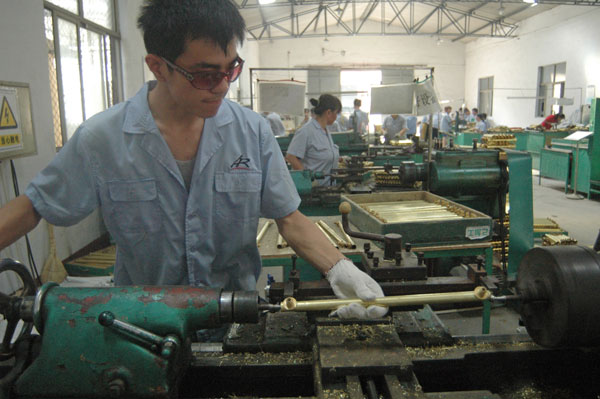Starch power
Updated: 2015-08-14 08:11
By Yang Feiyue(China Daily)
|
|||||||||||
 |
|
Lotus-leaf chicken wrapped in bread crust |
Made largely from sorghum, barley and peas, Shanxi vinegar is more full-bodied and well-rounded than regular distilled vinegar and is comparable to the most expensive balsamic vinegar from Italy, says Martin Yan, a Chinese-American celebrity chef based in California.
Sauces featuring tomato and fried eggs, or minced meat and chopped garlic sprouts, are commonly served with Shanxi noodles. Eggplants and Chinese cabbages are also frequently used in preparing sauce.
Pickled garlic and white and red carrots will be served alongside to balance the glutinousness and slight greasiness of the noodles, Li explains.
There are more than 400 kinds of flour that can be turned into noodles in various forms. The most common are made of buckwheat, oats, sorghum, corns and beans.
In addition to noodles, the new Shanxi cuisine has also evolved with time: It has shaken off its former dark appearance in favor of a more elegant look, says Li.
The kaolaolao is a good example: The hand-kneaded bun is sometimes carefully laid beside the minced meat and vegetable mixture used for stuffing to make an attractive plate. The sauteed version is chewy and mixed with fried eggs and vegetables. An alternate preparation comes in a bamboo steamer and resembles a beehive: Each piece is rolled into a column shape and stood up next to the others. Compared to the sauteed type, it's softer and creamier and pairs well with the tomato or fried-meat sauce. All three forms of kaolaolao should be eaten while hot. Otherwise, they will get hard and dry.
Related Stories
Pasta lovers at home with Shanxi noodles 2015-06-21 10:22
Shanxi noodles: A matter of pride 2015-06-20 09:37
Handmade noodles become local intangible cultural heritage 2015-04-27 15:03
Museums put ramen on a culinary pedestal 2015-03-30 08:07
Noodle village 2015-01-25 10:06
Today's Top News
Turkey's early elections 'decidedly possible': PM
Death toll rises to 50, military sends chemical specialists to blast site
12 firefighters among 44 killed in explosions
Chinese yuan extends fall Thursday
China rattles a few cages in the world's financial markets
Tibetan drivers to finally see the end of 'death road'
China becomes world's largest robots market for second consecutive year
Yuan may stumble, but will not fall
Hot Topics
Lunar probe , China growth forecasts, Emission rules get tougher, China seen through 'colored lens', International board,
Editor's Picks

|

|

|

|

|

|






